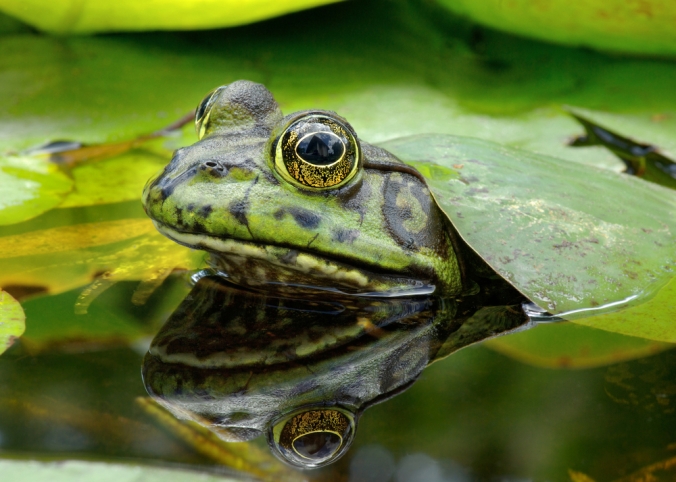Spring is finally here — and so is World Frog Day! The weather is gradually warming up and plants are bursting through the soil, preparing to dazzle us with their blooms. Spring also brings the beautiful sounds of frogs and toads calling to each other. In honor of World Frog Day, we are sharing frog-themed activities that can be done at home with minimal supplies.

Frogs live on six of the Earth’s seven continents, all of them except Antarctica. They are all different colors and sizes. The largest species of frog, the goliath frog, measures 8” to 12” in length. That is about the size of a piece of copy paper! The smallest known frog, one of the microhylid frogs, measures less than half an inch, about the width of a regular size paperclip. If you have children at home, pull out a paper clip and a piece of copy paper. Have them compare the items to objects around the house to see what is larger than the world’s largest frog and what is smaller than the world’s smallest frog. Comparing sizes of different things helps people build number sense, or an intuitive understanding of numbers, an important skill for all of us to master, especially young children.

Michigan is home to 13 species of frogs and toads. It is usually easier to hear them calling or singing to each other, than it is to actually see them. That is because they are well camouflaged, meaning they blend in with their surroundings. It is important to know which species of frogs and toads live in certain areas. They are considered bioindicators, which means they are species of animals who are greatly impacted by the health of the environment. If the water, wetlands and other places they live are polluted or contaminated, they cannot survive. If their habitat is clean and healthy, many species or individuals will be living there, all calling out to each other in a beautiful chorus.

The Detroit Zoological Society (DZS) leads a FrogWatch Chapter (aza.org/frogwatch and detroitzoo.org/animals/frogwatch/) to train people, like you, to recognize and record frog calls around Michigan. The data that people submit helps DZS staff and researchers to analyze and better understand frog populations throughout our area and across the country.

This spring, consider spending time outside in the evening to listen for frogs and toads. You can practice being a frog and toad researcher, or a citizen scientist, by learning the calls and recording information like date, temperature, weather conditions, the time you start and stop listening, and the species you hear. The Michigan Department of Natural Resources has short recordings of each species on their website to help you learn them. Practicing recording data is an important skill, especially for kids. Send your data to Rebecca Johnson (rjohnson@dzs.org) or Mike Reed (mreed@dzs.org). Next year, you can join us for training to become a certified FrogWatch participant. The earliest calling frogs will be starting soon, the wood frogs and spring peepers, so pick a night where the temperature is above 40 degrees Fahrenheit and head outside to listen!